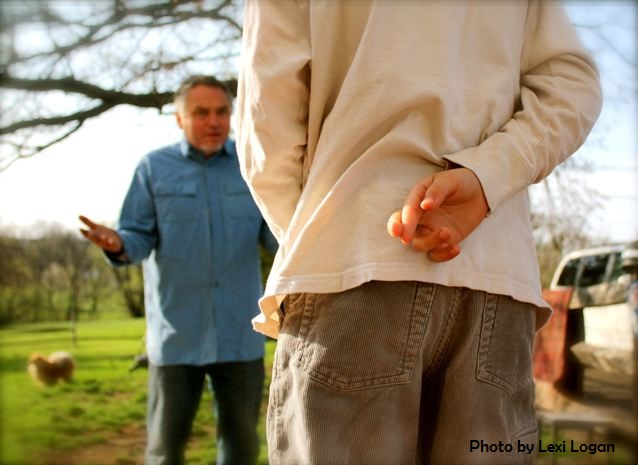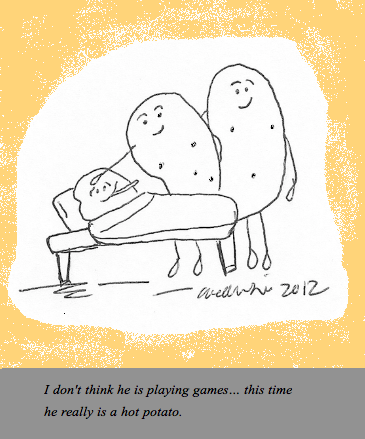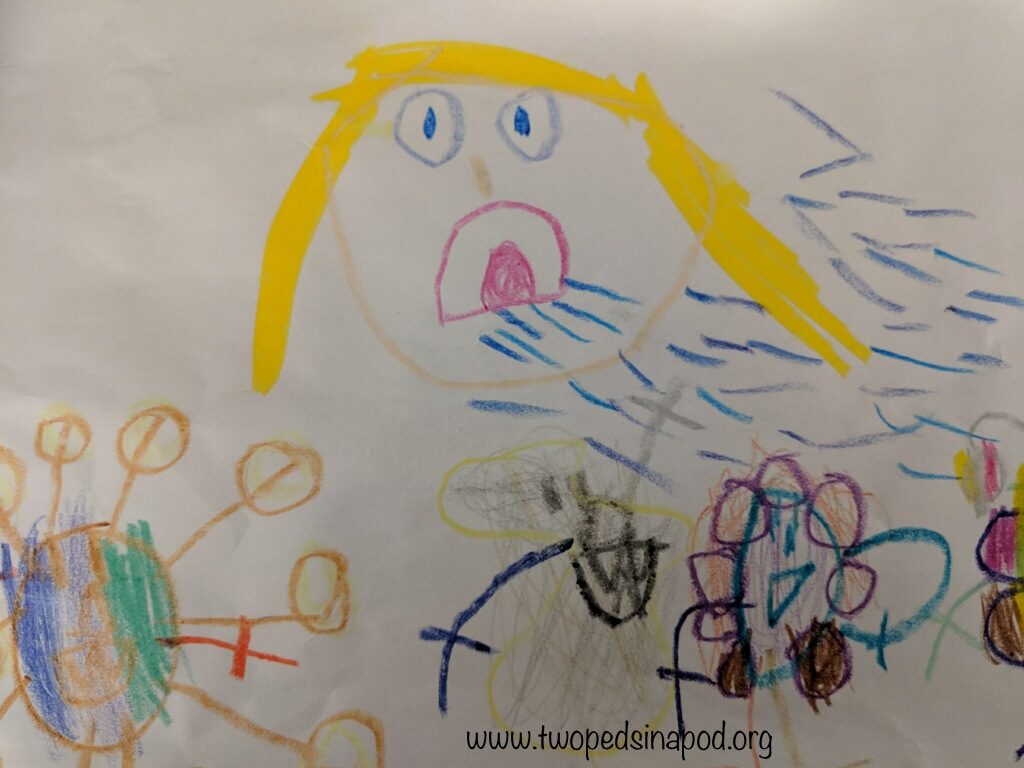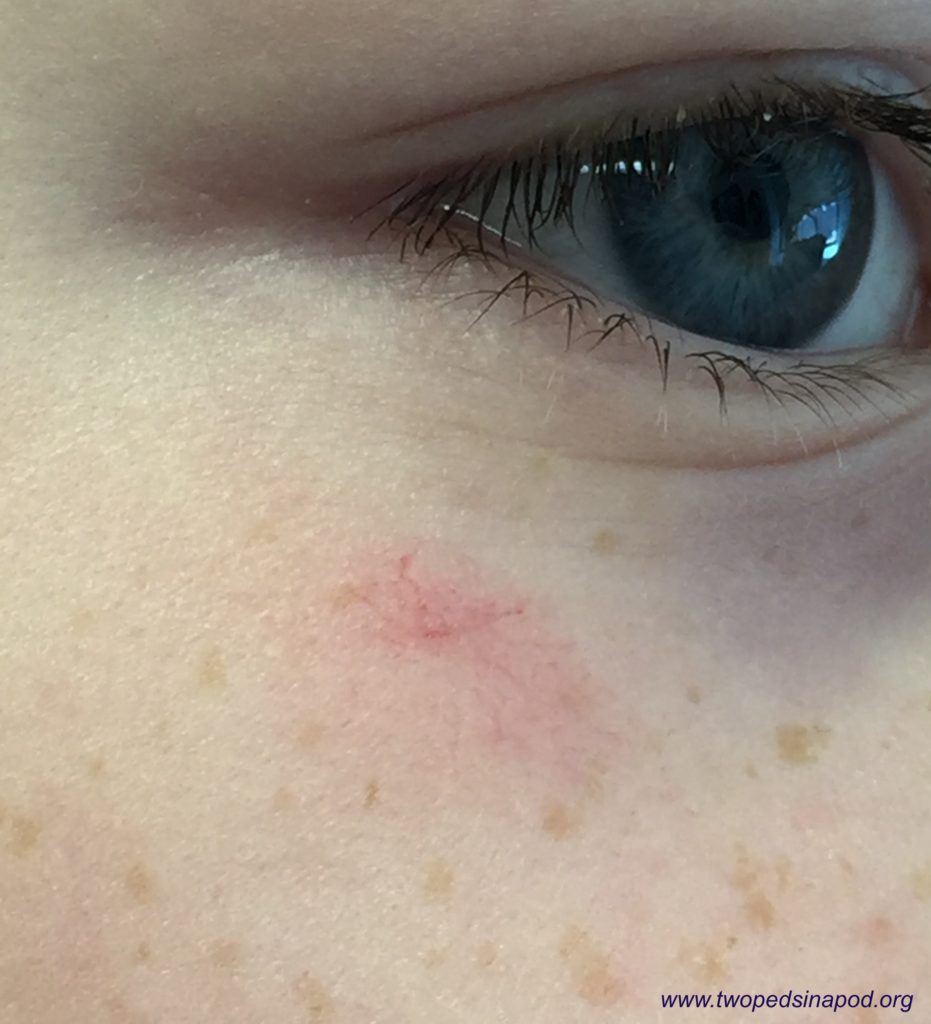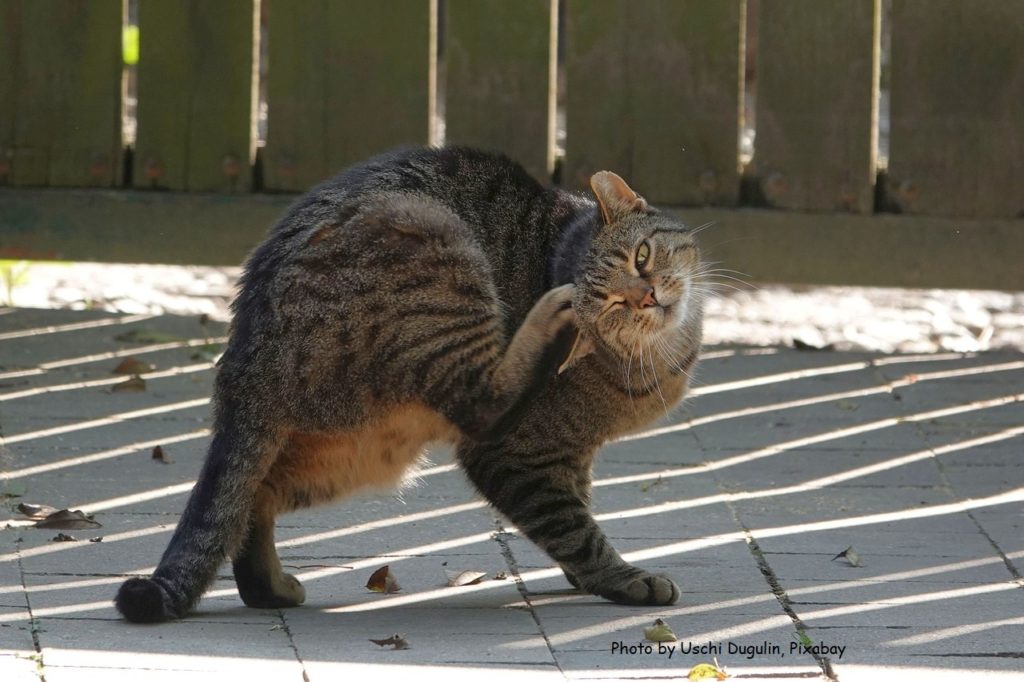 It’s pretty annoying to be itchy. Dr. Lai fondly called her itchy oldest child with eczema “itchy, bitty, spider,”or some variant of that, for much of her daughter’s childhood. Fortunately, for your kids with sensitive skin, dermatologist Teresa S. Wright, MD joins us today with tips for how to treat eczema or atopic dermatitis—Drs. Kardos and Lai
It’s pretty annoying to be itchy. Dr. Lai fondly called her itchy oldest child with eczema “itchy, bitty, spider,”or some variant of that, for much of her daughter’s childhood. Fortunately, for your kids with sensitive skin, dermatologist Teresa S. Wright, MD joins us today with tips for how to treat eczema or atopic dermatitis—Drs. Kardos and Lai
Has your child been diagnosed with eczema? Eczema is a general term that refers to a group of skin conditions characterized by itchy red rashes. The term “eczema” often refers to a skin condition known as atopic dermatitis. Atopic dermatitis may occur in association with allergies and/or asthma and the rash tends to come and go. Common triggers include illness, stress, and changes in the weather or temperature. The cause of atopic dermatitis is not well understood. However, most children with atopic dermatitis tend to have very dry, sensitive skin. Atopic dermatitis cannot be cured, but it can be controlled. Most children with atopic dermatitis gradually improve and many will outgrow it over time. In order to control the rash, a proper daily skin care regimen is extremely important.
Skin care regimen to treat eczema
A daily bath or shower is recommended. It is a common myth that daily bathing “dries out” the skin. This is not true. Bathing puts moisture in the skin and removes irritants and germs. However, the bath or shower should be short (less than 10 minutes) and not too hot. Cleanser should be gentle, fragrance-free, and dye-free. Dove™ for Sensitive Skin or Aveeno™ fragrance-free cleanser are good choices. After bathing, pat the skin dry with a soft cotton towel and apply a heavy bland moisturizer to all skin to seal in the moisture.
 The type of moisturizer you select is very important. It is best to use an ointment (like plain unscented Vaseline™ or Aquaphor™) or a heavy cream (like Vanicream™, CeraVe™ cream, Cetaphil™ cream, or Aveeno™ Baby Eczema Therapy Moisturizing cream, to name a few). Lotions are poor choices because they tend to contain more preservatives and ingredients that can sting open skin or cause irritation.
The type of moisturizer you select is very important. It is best to use an ointment (like plain unscented Vaseline™ or Aquaphor™) or a heavy cream (like Vanicream™, CeraVe™ cream, Cetaphil™ cream, or Aveeno™ Baby Eczema Therapy Moisturizing cream, to name a few). Lotions are poor choices because they tend to contain more preservatives and ingredients that can sting open skin or cause irritation.
 Apply moisturizer to the skin at least twice daily, but more often if the child’s skin is unusually dry or the eczema is severe. Apply topical medications sparingly to the affected areas prior to the application of moisturizer. I recommend applying topical medications twice daily, but you should follow the instructions given by your child’s doctor. It is very important that medications are applied only to areas of active eczema and never to normal skin. Apply moisturizer to all skin, including over the areas where you already applied medication.
Apply moisturizer to the skin at least twice daily, but more often if the child’s skin is unusually dry or the eczema is severe. Apply topical medications sparingly to the affected areas prior to the application of moisturizer. I recommend applying topical medications twice daily, but you should follow the instructions given by your child’s doctor. It is very important that medications are applied only to areas of active eczema and never to normal skin. Apply moisturizer to all skin, including over the areas where you already applied medication.
This time of year, parents ask if swimming is okay for children with atopic dermatitis. In general, swimming should not be a problem for children with atopic dermatitis. In fact, some children improve dramatically with regular swimming. Improvement may be due to the effect of chlorine. Chlorine causes a decrease in the skin residing germs that can play a role in triggering eczema flares. However, chlorinated water can be very drying to the skin, so rinse the skin thoroughly and apply a generous layer of a heavy moisturizer as soon as possible after swimming. For most children, taking these steps prevents significant flares of swimming related atopic dermatitis.
In my practice, I see many children with eczema every day. I understand how challenging and frustrating this condition can be for parents. The recommendations I outlined here are often very helpful and I sincerely hope they will help you control your child’s eczema.
Teresa S. Wright, MD
©2019 Two Peds in a Pod®
Dr. Teresa S. Wright is a board-certified pediatric dermatologist in Memphis, TN, and is Division Chief of Pediatric Dermatology at LeBonheur Children’s Hospital and Associate Professor of Dermatology at the University of Tennessee Health Science Center. She has particular interests in atopic dermatitis, vascular birthmarks, and pigmented skin lesions.
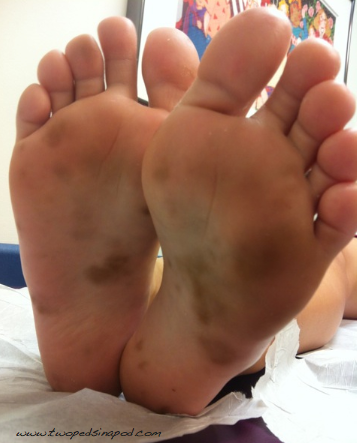 What causes brown spots on feet? In the summer, we see kids with these spots on their feet or hands. Read on for the answer behind the mysterious spots.
What causes brown spots on feet? In the summer, we see kids with these spots on their feet or hands. Read on for the answer behind the mysterious spots. It’s pretty annoying to be itchy. Dr. Lai fondly called her itchy oldest child with eczema “itchy, bitty, spider,”or some variant of that, for much of her daughter’s childhood. Fortunately, for your kids with sensitive skin, dermatologist
It’s pretty annoying to be itchy. Dr. Lai fondly called her itchy oldest child with eczema “itchy, bitty, spider,”or some variant of that, for much of her daughter’s childhood. Fortunately, for your kids with sensitive skin, dermatologist  The type of moisturizer you select is very important. It is best to use an ointment (like plain unscented Vaseline™ or Aquaphor™) or a heavy cream (like Vanicream™, CeraVe™ cream, Cetaphil™ cream, or Aveeno™ Baby Eczema Therapy Moisturizing cream, to name a few). Lotions are poor choices because they tend to contain more preservatives and ingredients that can sting open skin or cause irritation.
The type of moisturizer you select is very important. It is best to use an ointment (like plain unscented Vaseline™ or Aquaphor™) or a heavy cream (like Vanicream™, CeraVe™ cream, Cetaphil™ cream, or Aveeno™ Baby Eczema Therapy Moisturizing cream, to name a few). Lotions are poor choices because they tend to contain more preservatives and ingredients that can sting open skin or cause irritation. Apply moisturizer to the skin at least twice daily, but more often if the child’s skin is unusually dry or the eczema is severe. Apply topical medications sparingly to the affected areas prior to the application of moisturizer. I recommend applying topical medications twice daily, but you should follow the instructions given by your child’s doctor. It is very important that medications are applied only to areas of active eczema and never to normal skin. Apply moisturizer to all skin, including over the areas where you already applied medication.
Apply moisturizer to the skin at least twice daily, but more often if the child’s skin is unusually dry or the eczema is severe. Apply topical medications sparingly to the affected areas prior to the application of moisturizer. I recommend applying topical medications twice daily, but you should follow the instructions given by your child’s doctor. It is very important that medications are applied only to areas of active eczema and never to normal skin. Apply moisturizer to all skin, including over the areas where you already applied medication.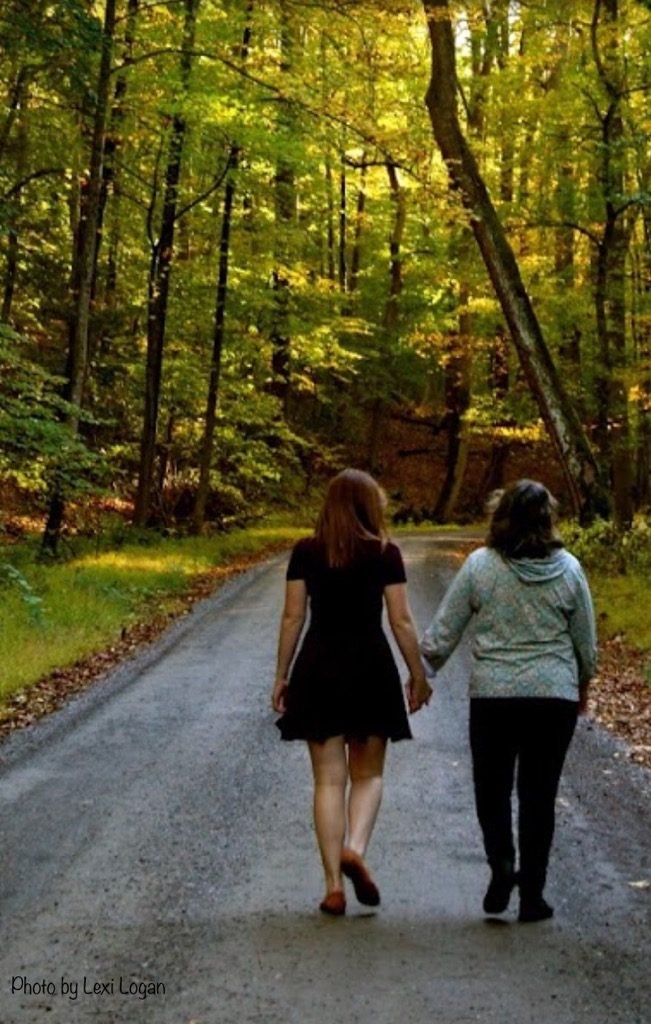 Do you wonder if any communication actually occurs when you talk to your teen? We invite you to
Do you wonder if any communication actually occurs when you talk to your teen? We invite you to 